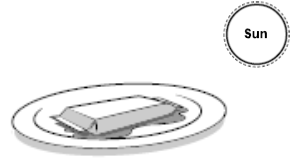Importance of the topic
Materials surround people everywhere, and it is important to learn about their properties and functions. Understanding the differences between various materials facilitates learning how to use them for certain purposes. By using materials properly, it is possible to change their properties and even save the planet from environmental pollution through recycling. For example, every student may contribute to this effort by making a vase from a plastic bottle.
Science content knowledge
Since this learning sequence targets year 1 students, the teacher will need to acquaint children with several materials and their properties to teach them to draw conclusions based on their own experiences. To ensure that children will develop thinking and analyzing skills, the teacher should cultivate student interest in the experience by answering all questions and setting the direction for the process of learning (Harlen, 2018). In particular, the properties of the following materials should be known: paper, cloth, wood, plastic, and nylon. Also, during survey activities, the teacher should be aware of the following properties: bouncing – not bouncing, hard-soft, durable – fragile, and so on.
To shape the ability of children to understand materials, it is possible to show a toy made of wood or rubber, various cloth types, and notebooks made of paper. The teacher should be ready to answer questions regarding how the mentioned items were produced. The conceptual knowledge for this learning module should also include introducing children to the properties of materials through experiments (Harlen, 2018).
One way to help students understand the properties and functions of materials is to develop the ability to identify them in a tactile way. Also, the teacher is expected to be aware of key environmental pollution-related problems such as global warming, recycling needs, and proper use of natural resources. Among other required science skills, the ability to explain such terms as an object, material, recycling, reuse, and more, will be necessary. In general, the teacher should encourage students’ curiosity to explore different materials and their functions in the everyday world.
Children’s questions
- How can we create paper from wood if trees do not look like they can be used for writing?
- How many times can use paper and plastic be recycled, and why?
- How can we determine the material our clothes are made of?
- Why does spaghetti become soft after cooking?
Children’s misconceptions
Some students may believe that recycling is used for generating more profit instead of reducing people’s dependence on natural resources. More to the point, other potential misconceptions include misinterpretation of scientific vocabulary as well as beliefs that all materials can be changed and that rubber is a natural material.
Targeted Outcomes
- Everyday materials can be physically changed in a variety of ways (ACSSU018)
- People use science in their daily lives, including when caring for their environment and living things (ACSHE022)
- Science involves observing, asking questions about, and describing changes in objects and events (ACSHE021)
- Pose and respond to questions, and make predictions about familiar objects and events (ACSIS024)
- Participate in guided investigations to explore and answer questions (ACSIS025)
- Compare observations with those of others (ACSIS213)
- Investigate by posing questions, including testable questions, making predictions, and gathering data to draw evidence-based conclusions and develop explanations (ST3-4WS)
- Using a range of methods to sort information, including drawings and provided tables through discussion (ACSIS027) (“Science,” n.d.).
Lesson Sequence
Bibliography
Aubusson, P., Burke, P., Schuck, S., Kearney, M., & Frischknecht, B. (2014). Teachers choosing rich tasks: The moderating impact of technology on student learning, enjoyment, and preparation. Educational Researcher, 43(5), 219-229.
TheDanisha2009. (2012). 3C materials song. Web.
Deepa, R. (2017). Recycling video – Paper, plastic, metal & glass. Web.
Harlen, W. (2018). The teaching of science in primary schools (7th ed.). New York, NY: Routledge.
Science. (n.d.). Web.
Walan, S., & Chang Rundgren, S. N. (2014). Investigating preschool and primary school teachers´ self-efficacy and needs in teaching science: A pilot study. Center for Educational Policy Studies Journal, 4(1), 51-67.
Ward, H., & Roden, J. (Eds.). (2016). Teaching science in the primary classroom (3rd ed.). Thousand Oaks, CA: Sage.
Appendices
Appendix 1

- What happened?
- Can you help solve the mystery? Answer the questions. Make sure you explain.
- What was it before? Can you describe it?
- Why did it change?
- Did it change slowly or quickly?
- Could you make it go back to how it was before? Why or why not?